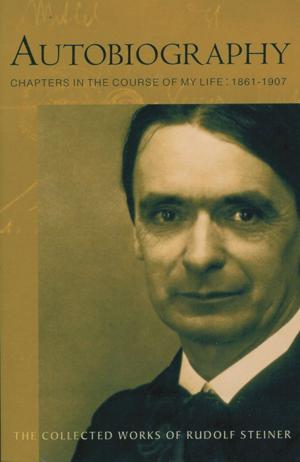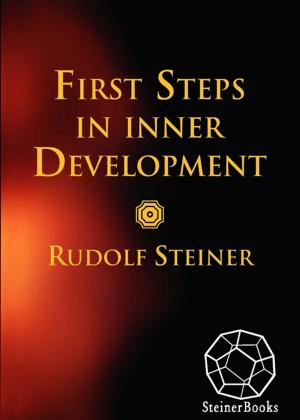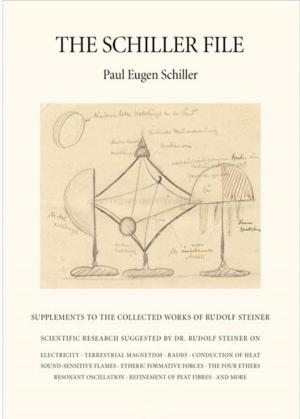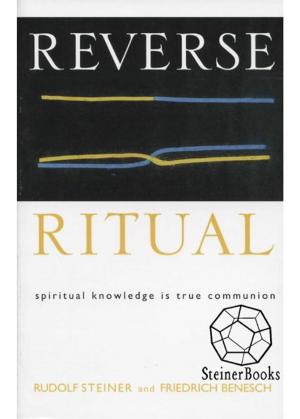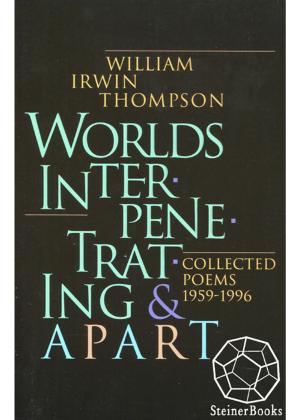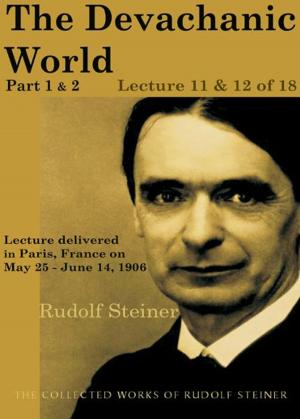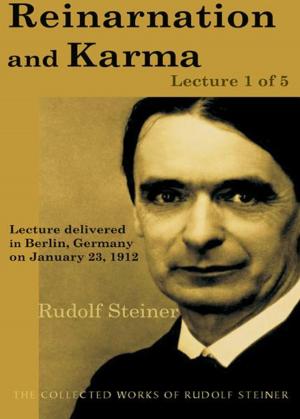The Essence of Waldorf Education
Nonfiction, Religion & Spirituality, Christianity, Youth Ministries| Author: | Peter Selg | ISBN: | 9781621511083 |
| Publisher: | Steinerbooks | Publication: | November 1, 2010 |
| Imprint: | SteinerBooks | Language: | English |
| Author: | Peter Selg |
| ISBN: | 9781621511083 |
| Publisher: | Steinerbooks |
| Publication: | November 1, 2010 |
| Imprint: | SteinerBooks |
| Language: | English |
Schools reflect the state of society. If society is materialistic, competitive, egoistic, technological, and without concern for human values and long-term thinking, our schools will tend to reflect those values. However, what if education were about something else? What if education were about the future? What if education were a about nurturing a new generation of human beings, integrated in body, soul, and spirit and able to think for themselves and have the capacity to love? Perhaps the world would change. The Waldorf school, initiated and guided in 1919 by Rudolf Steiner, was conceived with precisely such an end in view. In this passionate, inspiring, and moving book, Peter Selg, speaks from a deep knowledge of Anthroposophy and from his extensive experience as a child psychiatrist. He returns to the original impulses behind the first Waldorf school to show their continuing validity and how they still respond to what we need. From this view, Waldorf education is future-oriented, based on a holistic worldview and cosmology that is humanistic, scientific, and spiritual, and develops through a curriculum and a teacher-student relationship based on love. Its focus is the miracle of the developing human being. Recognizing the equal importance of thinking, feeling, and willing, Waldorf education works through bodily movement and art, as well as through intellect and mind. Waldorf Education is not a theory but a living reality, and Selg brings this reality to life before us through the biography of the first Waldorf school. Thus, we learn to see it in a new wayin its essence, as a healing model of what education might become if the primary relationship, the inner core of a school, is the free relationship between teacher and student. As Steiner wrote: It is our task as teachers and educators to stand in awe of the individuality of the student and offer our help so that it can follow the laws of its own development. We are merely called upon to remove any obstacles in body or soul that might hinder the individuality from realizing its potential freely. A verse given at the dedication of a building at the Waldorf School in Stuttgart expresses the essence of Waldorf Education in poetic form: May there reign here spirit-strength in love; / May there work here spirit-light in goodness; / Born from certainty of heart, / And from steadfastness of soul, / So that we may bring to young human beings / Bodily strength for work, inwardness of soul, and clarity of spirit. The Essence of Waldorf Education is a translation from German of Der geistige Kern der Waldorfschule (Verlag Ita Wegman Institut, 2009).
Schools reflect the state of society. If society is materialistic, competitive, egoistic, technological, and without concern for human values and long-term thinking, our schools will tend to reflect those values. However, what if education were about something else? What if education were about the future? What if education were a about nurturing a new generation of human beings, integrated in body, soul, and spirit and able to think for themselves and have the capacity to love? Perhaps the world would change. The Waldorf school, initiated and guided in 1919 by Rudolf Steiner, was conceived with precisely such an end in view. In this passionate, inspiring, and moving book, Peter Selg, speaks from a deep knowledge of Anthroposophy and from his extensive experience as a child psychiatrist. He returns to the original impulses behind the first Waldorf school to show their continuing validity and how they still respond to what we need. From this view, Waldorf education is future-oriented, based on a holistic worldview and cosmology that is humanistic, scientific, and spiritual, and develops through a curriculum and a teacher-student relationship based on love. Its focus is the miracle of the developing human being. Recognizing the equal importance of thinking, feeling, and willing, Waldorf education works through bodily movement and art, as well as through intellect and mind. Waldorf Education is not a theory but a living reality, and Selg brings this reality to life before us through the biography of the first Waldorf school. Thus, we learn to see it in a new wayin its essence, as a healing model of what education might become if the primary relationship, the inner core of a school, is the free relationship between teacher and student. As Steiner wrote: It is our task as teachers and educators to stand in awe of the individuality of the student and offer our help so that it can follow the laws of its own development. We are merely called upon to remove any obstacles in body or soul that might hinder the individuality from realizing its potential freely. A verse given at the dedication of a building at the Waldorf School in Stuttgart expresses the essence of Waldorf Education in poetic form: May there reign here spirit-strength in love; / May there work here spirit-light in goodness; / Born from certainty of heart, / And from steadfastness of soul, / So that we may bring to young human beings / Bodily strength for work, inwardness of soul, and clarity of spirit. The Essence of Waldorf Education is a translation from German of Der geistige Kern der Waldorfschule (Verlag Ita Wegman Institut, 2009).

